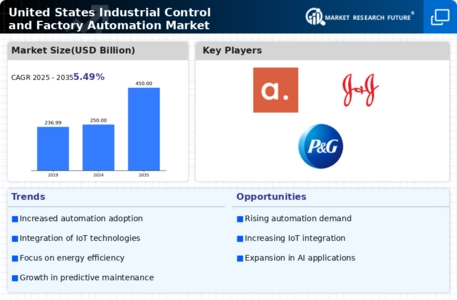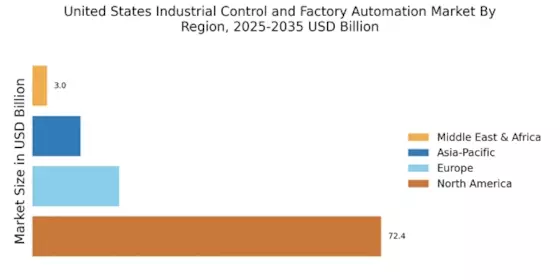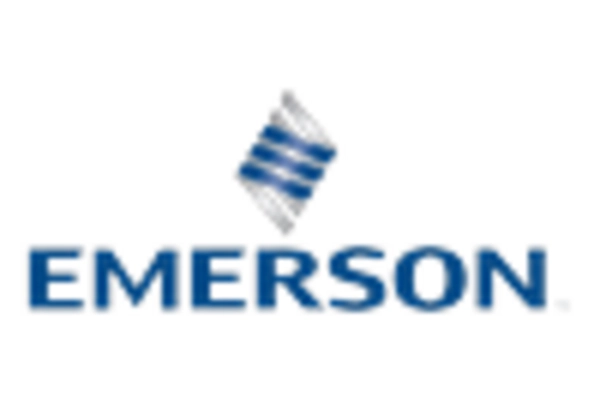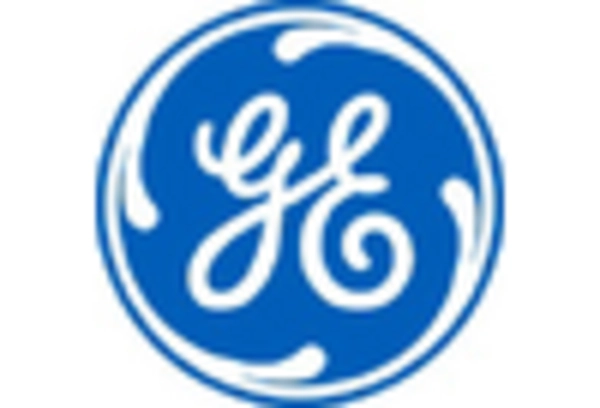Regulatory Compliance and Standards
The United States Industrial Control and Factory Automation Market is significantly influenced by regulatory compliance and standards. As industries face increasing scrutiny regarding safety, environmental impact, and operational efficiency, adherence to regulations becomes critical. Manufacturers are compelled to invest in automation solutions that meet stringent regulatory requirements. Recent data shows that compliance-related investments are expected to rise, as companies seek to avoid penalties and enhance their reputations. Additionally, the development of industry standards for automation technologies is fostering a more uniform approach to implementation, which can streamline processes and reduce costs. Consequently, organizations are focusing on integrating compliant industrial control systems to ensure they meet both current and future regulatory demands.
Focus on Workforce Safety and Training
The United States Industrial Control and Factory Automation Market is placing a heightened emphasis on workforce safety and training. As automation technologies become more prevalent, ensuring the safety of human operators in automated environments is paramount. Manufacturers are increasingly investing in safety systems and training programs to mitigate risks associated with automation. Data indicates that companies that prioritize safety training experience lower accident rates and improved employee morale. Furthermore, the integration of safety features in industrial control systems is becoming a standard practice, as organizations recognize the importance of creating a safe working environment. This focus on safety not only protects employees but also enhances overall productivity and operational efficiency.
Integration of Industry 4.0 Principles
The United States Industrial Control and Factory Automation Market is increasingly integrating Industry 4.0 principles, which emphasize the interconnectivity of machines, systems, and processes. This integration fosters a more intelligent manufacturing environment, where data flows seamlessly between devices and systems. The implementation of smart factories is gaining traction, as manufacturers seek to leverage data analytics for improved decision-making and operational efficiency. Recent statistics suggest that the adoption of Industry 4.0 technologies could lead to a 30% increase in productivity for manufacturers. As a result, companies are prioritizing investments in industrial control systems that support these advanced technologies, positioning themselves for future growth in a competitive landscape.
Demand for Customization and Flexibility
The United States Industrial Control and Factory Automation Market is witnessing a growing demand for customization and flexibility in manufacturing processes. As consumer preferences shift towards personalized products, manufacturers are compelled to adopt flexible automation systems that can accommodate varying production requirements. This trend is reflected in the increasing adoption of modular automation solutions, which allow for quick reconfiguration of production lines. Market data indicates that the flexible automation segment is expected to grow significantly, driven by the need for manufacturers to respond swiftly to market changes. Consequently, companies are investing in advanced control systems that facilitate rapid adjustments in production, thereby enhancing their ability to meet customer demands.
Technological Advancements in Automation
The United States Industrial Control and Factory Automation Market is experiencing a surge in technological advancements, particularly in automation technologies. Innovations such as artificial intelligence, machine learning, and the Internet of Things are transforming traditional manufacturing processes. These technologies enable real-time data analysis, predictive maintenance, and enhanced operational efficiency. According to recent data, the automation market is projected to grow at a compound annual growth rate of approximately 9% over the next five years. This growth is driven by the need for increased productivity and reduced operational costs, compelling manufacturers to adopt advanced automation solutions. As a result, companies are investing heavily in automation technologies to remain competitive in a rapidly evolving market.

















Leave a Comment